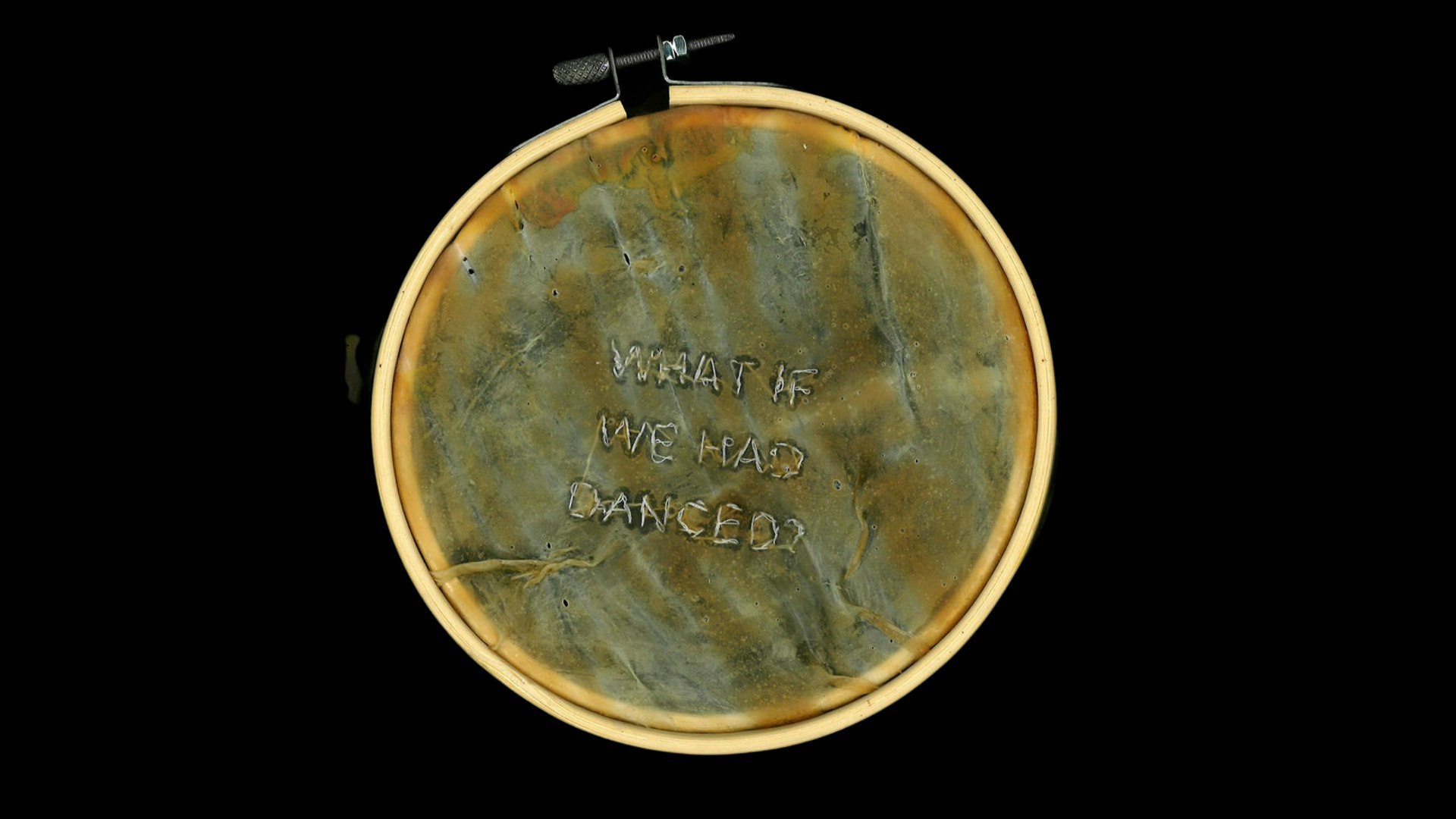electronics and spider figures
"What if we had danced?" stitches between family dynamics within mental distress, care, healing and the traditional Southern Italian phenomenon known as tarantism.
As both a daughter and a sister, as a child who grew up facing parental loss and facing episodes that involved depression, anxiety and at times violence, I have taken upon my shoulder the responsibility of upholding the familial bond. Nevertheless, I got stuck many times with a sense of helplessness. As if my efforts had been swept under a carpet.
It is a reflection on the emotional weight I carried while growing up in a family that struggled with mental distress. I ponder whether there could have been tools available for me to deal with these challenges and to cope with my emotional exhaustion.
"Care involves some forms of ongoing connection"
J. Tronto (1993)
Being far away made me reflect on our heritage. While growing up I heard many stories, traditions and music about Southern Italy, but what really stuck with me was tarantism.
.In Salento, up to the last century, tarantism was widespread as a historical, cultural and religious phenomenon. It predominantly involved the rural world. The term refers to both illness and ritual. It was believed that the bite of a spider, the tarantula, would lead to a state of mental distress. The treatment consisted of a ritual involving choreutic, musical and chromatic elements.
© Annabella Rossi, 1960
Rituals are an opportunity to reflect on the disjuncture between what is and what should be; they are a “focusing lens” through which people can attempt to see what is significant in real life (C Bell, 2009). In this case, we shed light on the state of subordination that afflicted women, aggravated by poverty, harvest fatigue, the entrenched patriarchal structure and the socioeconomic disparities between the North and the South.
The interpretation I’m proposing shifts away from the traditional imagery of the spider as the cause of the disease, which relegates society's responsibility to the realm of symbolism and mysticism, by absolving society of accountability and searching for blame elsewhere. On the contrary, if we shift perspective and acknowledge the spider as the catalyst, we also overturn the system of values : we confront the lack of care and healing in the reality that the sufferers inhabit and societal responsibility.
Spider speaker fed with traditional music (tarantella) from Apulia
In my installation, the spider narrates its story, urging us to get closer and listen. She, the spider, knows how important she is and remains perplexed by human behaviour. A speaker embedded in latex conveys this story, creating a sort of halo around it, reflecting how the spider and the saint were often conflated in the ritual.
Details
Details
In the ritual, resonance could be found in the musicians' instruments or the sufferer's dance. But In my experience, the body of the musicians, community and dancers have been all missing. This absence is echoed throughout the installation. The first embraces the dance as a liberating movement and the possibility of embodying the crisis and releasing it.
The second focuses on the role of the community in acknowledging the distress and how the crisis is not a symptom of someone's illness but a symptom of a sick society.
Details of the back of the piece
"What if we had danced?", Graduation Show, MIVC, 2024
Bass shaker fed with the sound of dancing feet
There are reverberations of someone’s steps, yet no dancer. It is a feeling the audience can sense in their bodies, a sensation that lingers and yet is trapped within the spider’s web. As the spider says in its tale, if no one dances, it will start weaving its web all around.
DIY has been also a fundamental part of my learning as it is a question of trying, failing, asking for help, and accepting. Whatever I am attempting to create doesn't have to immediately look pretty, to be stable or to run forever. DIy is here linked to textile practice in a way of taking control again of these practices often enclosed in the domestic sphere and pleasurable aesthetic.
Detail
The latex in my installation evokes a bodily presence, symbolising both the circle of community and the skin pierced by the spider's fangs. Similarly, the latex is pierced by needles, mending torn parts to create new images on its surface.
Embroidery and spider’ bite both give material form to intangible quality.
Women have been
embroidering, sewing, knitting, crocheting
healing, r e p e a r i n g , c l o s i n g , m e n d i n g , j o i n i n g
© Laura Bouman, 2024
In the words of Roszika Parker, "Stitches convey meaning, they create and they repair the damage”.
As embroidery and crocheting have been a fundamental part of my practice, I've decided to perform these textile practices throughout the show and fill the space with them.
